12 Grape Varieties That Were Almost Extinct
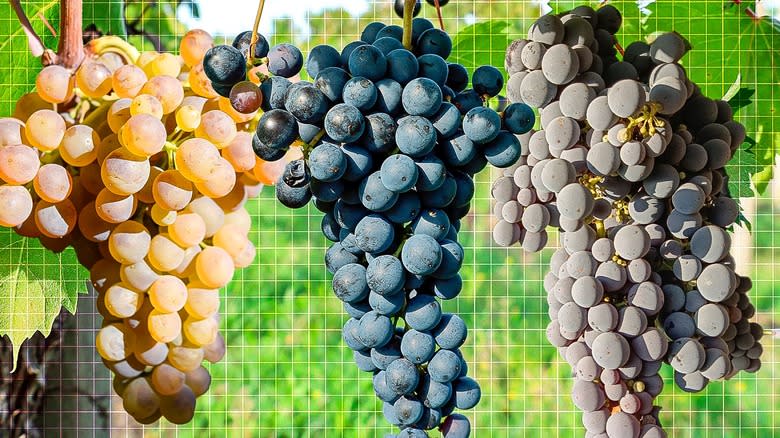
Many people often buy a bottle of wine on repeat or look for similar options once they find something they like. Unless you've taken a deep dive into the intricate world of wine, chances are the grapes you reach for are fairly common and grown around the world, like chardonnay and pinot noir, or the main feature of a popular region, such as sangiovese in Chianti. You might not think of wine grapes beyond how they taste and what food you want to pair them with, but the vine fruit has a story of its own.
The Romans spread vitis vinifera (the common grape vine) around Europe, and several populations, including the Spanish missionaries who helped transport them to California. Considering there are an estimated 10,000 grape varieties, it's no surprise that not all of them soared in popularity. In fact, many have died out over time, while others were just on the brink of extinction before being revived by enthusiastic grape growers. Varieties that only exist in small volumes in specific regions of the world often risk dying out in favor of those with a large international following. Others have faced disease and difficult growing conditions, increasing their vulnerability.
Thankfully, the following grapes were saved from extinction, with some doing very well for themselves at present. Read on to discover 12 varieties you almost missed out on tasting.
Read more: 13 Liquors Your Home Bar Should Have
Viognier
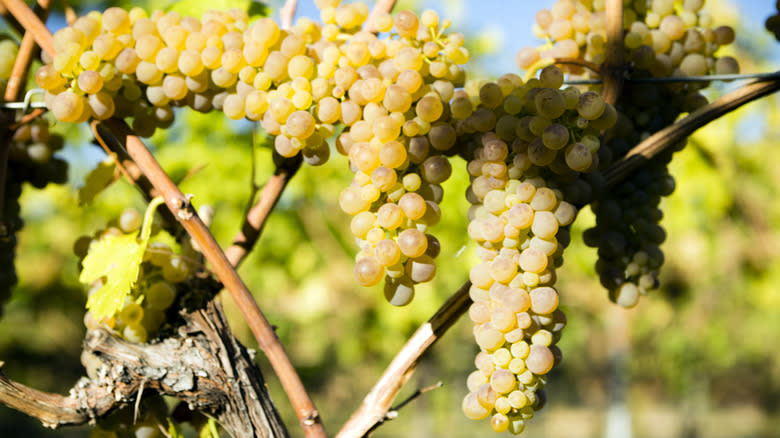
Nowadays, viognier is a pretty standard grape to see on liquor store shelves. Originally grown in the Northern Rhône Valley in France, it has since found its way to California, South Africa, Italy, and South America. The fact that its vineyard area was reduced to less than 80 acres in the '80s (with some reports suggesting even fewer in the decades prior) makes its current spread all the more impressive. The reasons for its near demise were primarily just a matter of convenience; the vines were situated on incredibly steep terrain that was hard to farm and harvest, which led growers to focus on more attainable fruit.
Over the next few decades, viognier's vineyard size increased by six to seven times, vastly improving its chances of surviving longer term. As it began spreading to other regions of France and overseas, viognier became all the more common to find, though it requires specific growing conditions to reach its potential. If the climate is too warm, the alcohol levels soar, and it becomes flabby without finesse due to low acidity.
At its optimal ripeness, it has a perfumed character with notes of honeysuckle, blossoms, and stone fruit. Interestingly, although it is mainly vinified as a white wine, it is sometimes co-fermented with syrah to deepen the color in the red grape and balance its profile.
Carménère
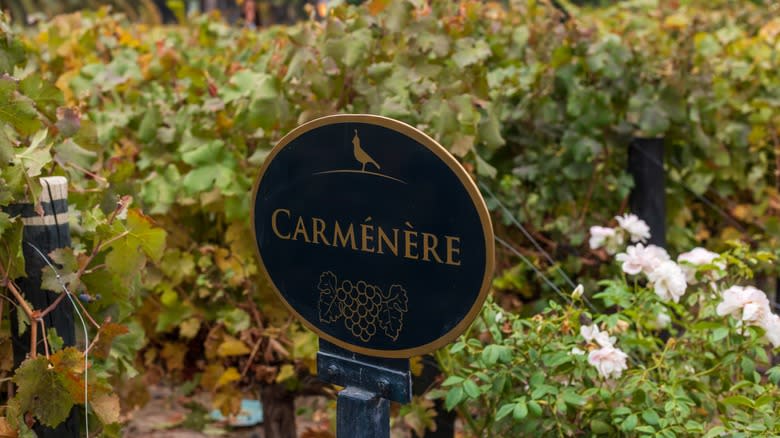
Chile's revered grape almost died out before making its way to South America. Originally grown in Bordeaux, France, carménère is actually still one of the permitted grapes in the red blend. However, after phylloxera (a root louse) decimated the majority of vineyards in Europe in the mid to late 1800s, carménère was not replanted. It didn't ripen as successfully as other grapes in Bordeaux like cabernet sauvignon and merlot, and it didn't do so well being grafted onto the roots of American vines, which became the necessary technique to prevent further phylloxera devastation.
While carménère is nearly non-existent in France, it flourished in Chile where most of the present-day plantings exist. Chilean importers originally thought it was merlot as the two vines looked similar and shared certain characteristics. However, in the mid-90s, the distinction was made and now Chileans proudly grow and drink carménère. Some tests suggest carménère is identical to cabernet gernischt, a popular variety in China, though other evidence leads to cabernet franc, a parent grape of carménère. Confusing family trees aside, carménère displays notes of red berries, plums, vanilla, cedar, green bell pepper, and spice.
Godello
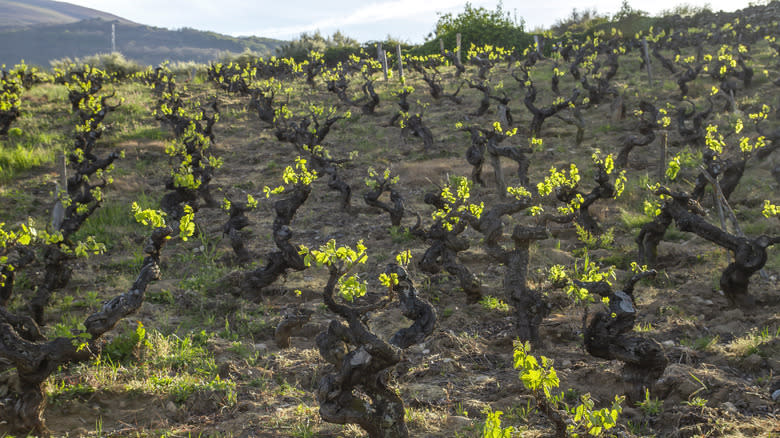
This white grape from Northern Spain almost didn't make it to the 21st century. By the 1970s, it was rapidly being substituted in favor of more popular international varieties, and its finicky nature and vulnerability to vine disease made it a nuisance for growers. Additionally, its vineyard area had already been vastly reduced by phylloxera in the second half of the 1800s.
Thankfully, Horacio Fernández Presa, aka the Father of Godello, saw the potential of this delightful grape and set about to ensure it did not meet an early demise. Together with other local enthusiasts, he created the ReViVal project in the region of Valdeorras, Galicia, in the 1970s and founded a winery, Bodegas Godeval, to produce wine with the godello grape. Fans love the grape's green apple and peach aromas, paired with citrusy notes and a refreshing acidity. Nowadays, it is grown in a few more regions in Spain, as well as in Portugal, where it is named gouveio.
Fiano
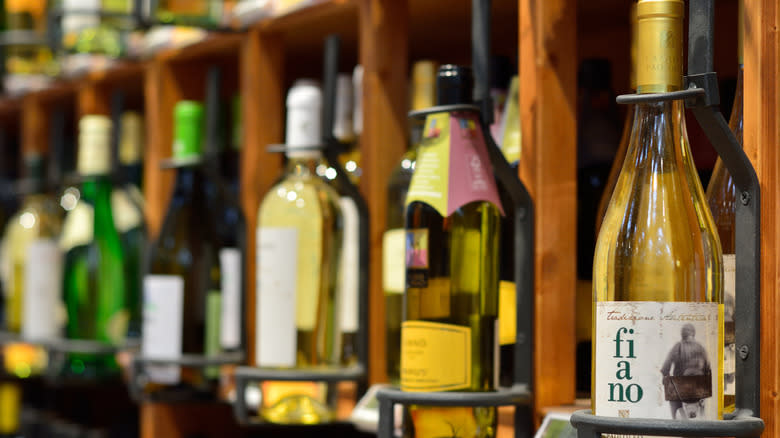
Ancient grapes have an added appeal for wine and history enthusiasts, who imagine the Romans savoring the very same drink. In Southern Italy, many of these varieties still exist, though some have had to fight to maintain vineyard presence. Thankfully, producer Mastroberardino in the province of Campania is dedicated to maintaining local varieties, such as fiano. This white wine grape greatly dwindled in vineyard area with the phylloxera epidemic and was then overlooked in favor of other varieties when it came time to replant vineyards.
Mastroberardino focused on fiano along with other ancient varieties, saving it from near extinction. In the late '70s, the Fiano di Avellino DOC was created, emphasizing its regional quality and paving the way for its DOCG, the highest standard in Italian wine, a couple of decades later. Nowadays, it remains one of the most esteemed white wines of Southern Italy, with fine examples worthy of aging. Although the majority of plantings are in the area, about 10% of fiano vineyards are now found in Australia, where it thrives. Fiano is bold and full-bodied, with floral and tropical fruit notes with a hint of honey and spice.
Arneis
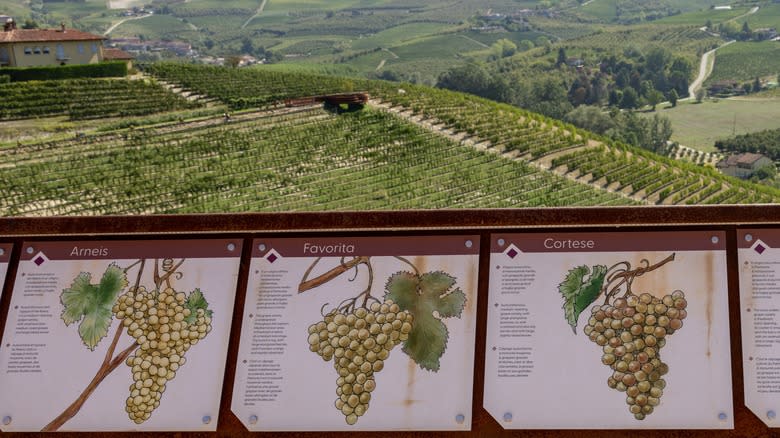
A common characteristic among grape varieties that nearly became extinct is their difficulty to grow. It's not surprising that farmers would favor vines that were easier to tend to instead of those with a tricky nature. The word "arneis" in the Piedmontese regional dialect means "little rascal," which gives you an idea of what it might be like to farm the grape. In an area known for its powerful red wines like Barolo and Barbaresco, a floral and aromatic white wine was more of an afterthought. By the 1960s, it was nearly extinct in its native area, though thanks to the efforts of winemaker Alfredo Currado, it managed to see a revival and become popular once again.
Nowadays, there are a couple of thousand acres of arneis vineyards in Italy, and it has also received interest in Australia and in California, where it is grown in small amounts. It produces a deliciously lush white wine with stone fruit notes and hints of hazelnut and almond. It can be vinified with more of a fresh mineral character or aged in oak, giving it a vanilla undertone and a creamy mouthfeel.
Touriga Nacional
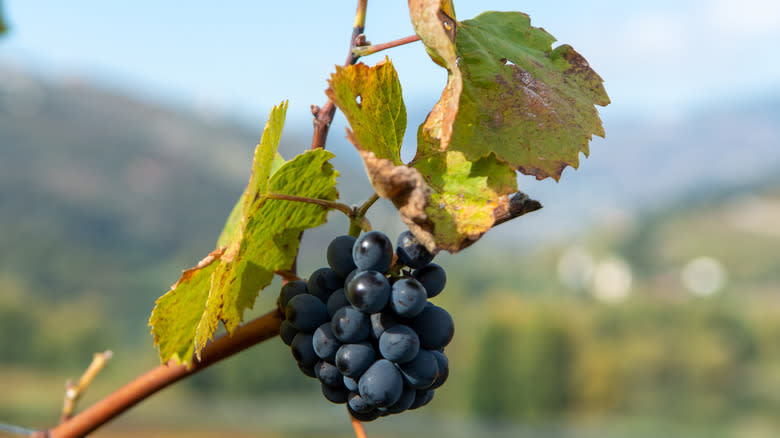
This Portuguese grape wasn't always one of the prized components of port wine, and there was a time in the 1970s when it almost became extinct in the Douro Valley. Touriga nacional's sensory characteristics weren't the problem, but its low yields and minimal juice to skin ratio made it more tedious for growers, who eschewed it in favor of more consistent fruit. Thankfully, concerted efforts to identify clones of the grape that produced higher yields helped prevent its disappearance.
Now, touriga nacional is one of the primary varieties that go into port. It is also grown elsewhere in Portugal and in small quantities in several other countries, including the U.S., South Africa, and Australia. Aside from port, it is vinified as a notably robust dry wine, often blended with other varieties to smoothen out the edges. Interestingly, in the last few years it has become one of the accepted grapes in a Bordeaux red blend, further enhancing its international appeal. What it lacks in volume, it makes up for in flavor, with elegant dark fruit aromas and rich tannins.
Malagousia
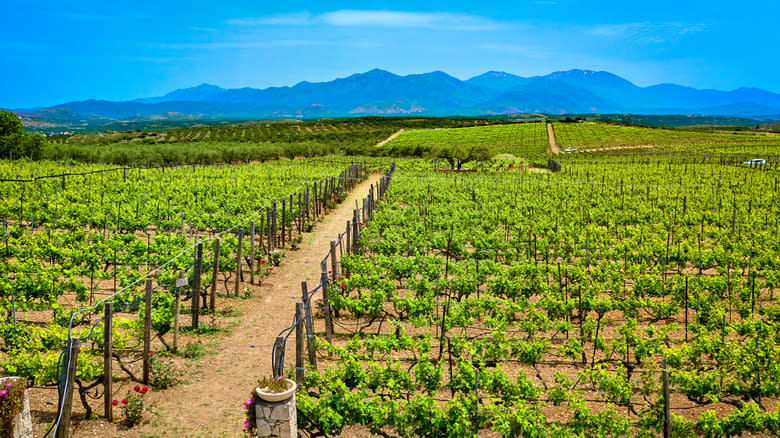
Greece makes pretty splendid wines with its hundreds of indigenous grapes, but some have come close to falling entirely out of favor. Malagousia was one such variety in the second half of the 20th century. By that time it was primarily used to make sweet wines, which were decreasing in popularity along with the grape's vineyard area. A small group of winemakers took matters into their own hands and began planting vineyards with only malagousia, ultimately leading to its revival.
The variety is now found across Greece, with around 40 wineries growing it in a wide range of styles. It produces medium-bodied wines and is commonly blended with other white local grapes to round out the mouthfeel. Citrus, stone fruit, and floral aromas are often present, with a range of profiles from refreshing to full and rich depending on the growing conditions and cellar practices. It is still vinified as both dry and sweet wines, and some producers keep the juice in contact with the skins for a prolonged period to make a more robust wine (aka orange wine).
Schioppettino
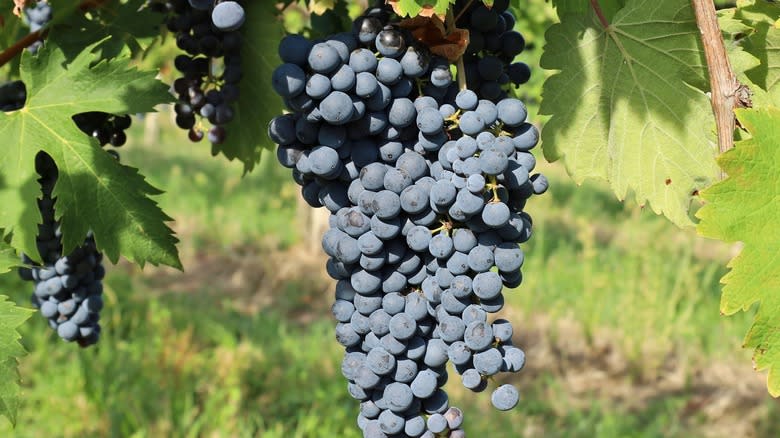
With hundreds of wine grapes across 20 regions, it's no surprise that several Italian varieties came pretty close to extinction (and some did indeed succumb to that fate). Schioppettino was a close call, but thankfully, this floral and spiced red wine can be purchased stateside. The variety's origins date back several centuries, but it was another victim of the phylloxera epidemic that decimated local vineyards. Many winemakers opted to plant more popular international grapes instead, leaving very few plantings of schioppettino.
In the 1970s, the variety was not even legally recognized by the Italian governing bodies, but this changed with the dedication of a local winemaker in the Friuli region in northeastern Italy. He planted vineyards with cuttings from the last remaining vines, eventually producing a stellar wine in the late 1970s that brought schioppettino back to mainstream consumers. This lively wine is juicy on the palate, with savory characteristics and a hint of red fruit. It grows almost exclusively in northeastern Italy where it is also called ribolla nera, with a small vineyard area found in the Russian River Valley in California.
Jampal
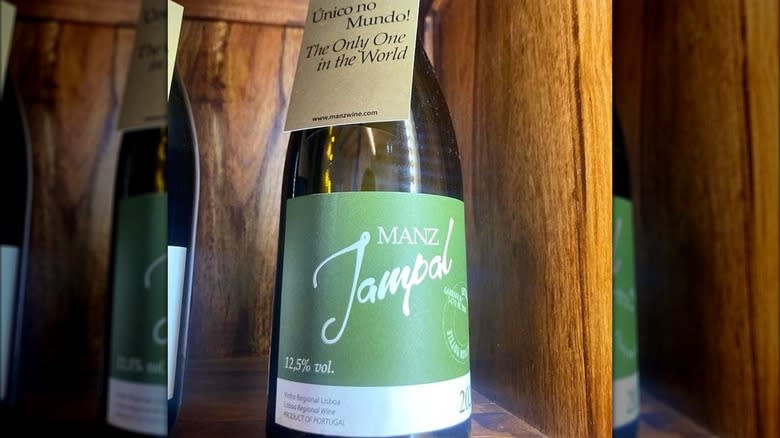
The range of Portuguese grapes is plentiful, including jampal, which has seen a slight resurgence though vineyard areas remain minimal. In this case, its savior wasn't an enthusiastic winemaker or farmer but a former soccer player. André Manz found himself the proud owner of a small vineyard near Lisbon, which produced excellent white wines from its fruit. Upon further investigation, he learned it was jampal, a rare variety that was nearly non-existent in Portugal. To ensure the grape didn't entirely disappear, he used cuttings from his vines to increase the vineyard area.
There certainly isn't plenty of jampal to go around these days, and it is hard to grow due to slow ripening, low yields, and a tendency to develop mildew. Nevertheless, the white wine grape has its share of fans who love its aromatic profile, tropical and citrus fruit, hints of flowers, and notable acidity. Although it is often used in blends, Manz chooses to highlight it, currently producing the only single-varietal jampal wine.
Graciano
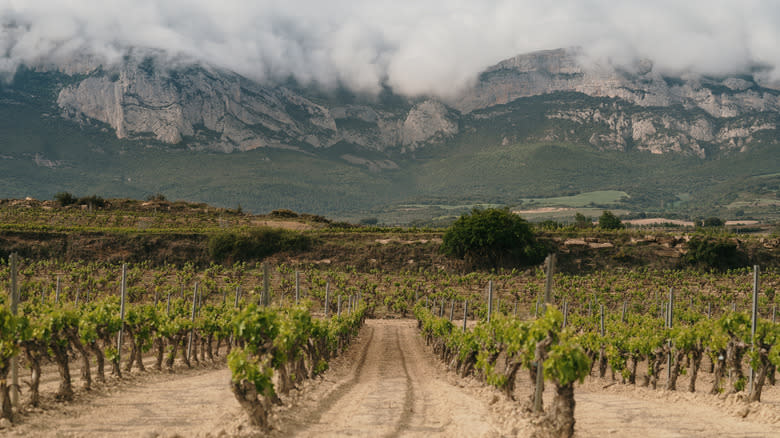
Fans of Spanish Rioja wines have likely tasted graciano in the famous blends, though it tends to play second fiddle to tempranillo and garnacha. It currently only makes up a few percent of the area's vineyards and wines as a welcome complement to the other regional red varieties. Harder to grow than its more popular counterparts, graciano was near extinction in the late 20th century. The yields were typically low, and it didn't ripen as fully as tempranillo, making it tempting to bypass it altogether.
Thankfully, graciano is experiencing an increased interest from local winemakers, and its characteristic late ripening is proving to be useful as temperatures heat up. The variety features bold yet elegant tannins, which serve to give the wines more structure. This quality makes it a great addition to give wines a longer aging potential. Its rich color is also praise worthy, adding depth to the hue of the blends. Red and dark fruits are present on the palate, along with hints of leather and licorice.
Timorasso
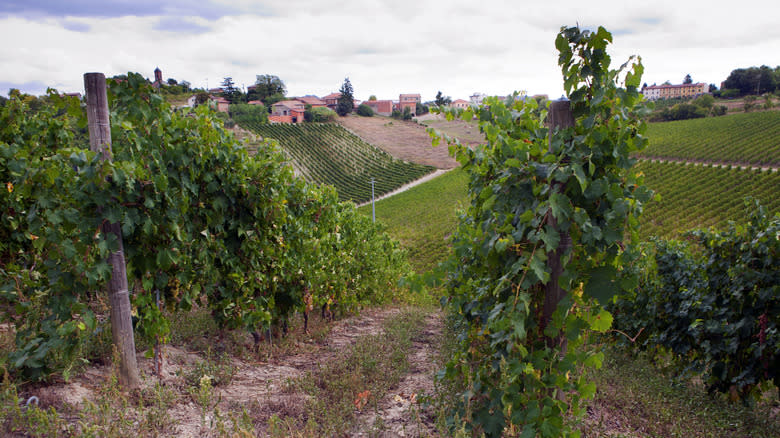
With its extensive repertoire of wine grapes, it's no surprise that Italy has nearly lost several along the way. Thankfully, timorasso is holding on in Piedmont, providing a refreshing white wine to counter the region's hearty reds. It would have been a shame to lose it completely, considering the variety has been around for several centuries, once a favorite of Leonardo da Vinci. For a long time, it was used in local sweet dessert wines, though it really stands out with its fresh acidity and mineral character.
In the 1900s, the region saw plenty of turmoil, and vineyards were passed between various owners with a priority on vines that were easy to grow and profitable. By the 1980s, the situation for timorasso started to appear dire before local winemakers collaborated to bring it back in vigor. A focus on understanding the vine's needs and how best to cultivate it led to its complete revival. At present, over 20 wineries are working with this variety, which produces complex white wines with finesse. Expect notes of stone fruit, almond, white flowers, and honey, with a crisp acidity and full body.
Vitovska
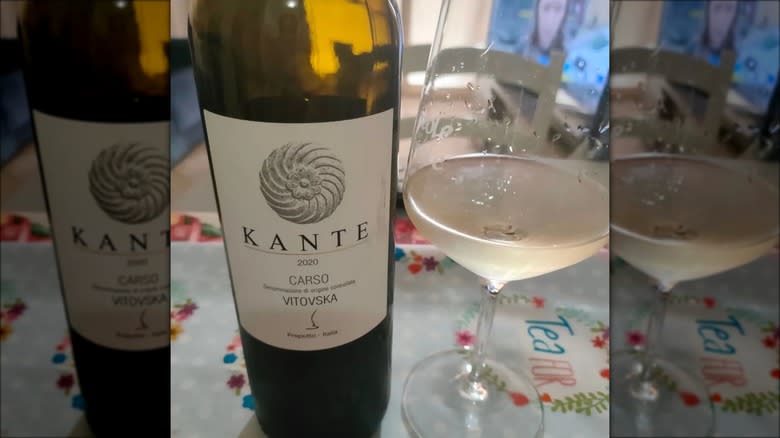
Northern Italy is home to plenty of indigenous wine grapes, including vitovska. Originating close to the border with Slovenia in the region of Friuli-Venezia Giulia, this white variety nearly didn't make it to the 21st century. While it might be unfamiliar to the average wine drinker, it happens to be the product of a cross between two popular varieties: glera (the Prosecco grape) and malvasia bianca lunga (used to make Vin Santo, a prized Tuscan dessert wine). Local winemakers, including Edi Kante and Benjamin Zidarich took over the task of planting it in surrounding areas, ensuring it did not completely disappear.
These days, it is grown in small quantities in Northeastern Italy and Slovenia, often vinified with skin contact, producing an orange wine. This delicate and aromatic wine has notes of stone fruit, herbs, spice, and a mineral note. When macerated with the skins, it takes on a deep amber hue and more structure. Its pleasant acidity gives it a refreshing character that is smooth and elegant.
Read the original article on Tasting Table.


